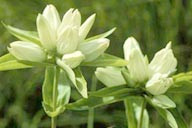 Loading... Please wait...
Loading... Please wait...- Home
- SEEDS
- SEED MIXES
- BUY PLANTS
- Info Request
-
Educational Videos
- Greenhouse Transplanting Demonstration
- Native Seed Cleaning demonstration at Ion Exchange Native Seed and Plant Nursery
- Attracting Butterflies
- Bidens - Bidens cernua Harvest Video
- Big Blue Stem Harvest
- Butterfly Milkweed Video
- Button Blazingstar - Liatris aspera Video
- Buttonbush - Cephalanthus occidentalis Video
- Canada Anemone - Anemone canadensis Harvest Video
- Cardinal Flower - Lobelia cardinalis Video
- Control Burn - Wildflower Field
- Cream Gentian - Gentiana flavida
- Culver's Root - Veronicastrum virginicum Video
- Cup Plant - Silphium perfoliatum Video
- Dormant Seeding | Planting
- Earthyman's Favorite Wildflowers Video
- Eco-Friendly Golf Course Seed Mix
- Floating Islands
- Fringed Loosestrife - Lysimachia ciliata Video
- Giant Yellow Hyssop - Agastache nepetoides Video
- Indiangrass - Sorghastrum nutans Video
- Iowa Prairie Partner Program
- Leadplant - Amorpha canescens (Potted) Video
- Meadow Blazingstar - Liatris ligulistylis
- Midland Shooting Stars - Dodecatheon meadii Video
- Native Plant Nursery Field Irrigation Experiment
- Nodding Onion - Allium cernuum Video
- Ohio spiderwort - Tradescantia ohiensis Video
- Old Man's Beard - Clematis virginiana blooms Video
- Oxeye Sunflower - Heliopsis helianthoides Video
- Prairie Spiderwort - Tradescantia bracteata
- Purple Coneflower - Echinacea purpurea Video
- Rain Garden or Water Garden Video
- Rattlesnake Master - Eryngium yuccifolium Video
- Riverbank Stabilization - Wetland Plants
- Rose Mallow - Hibiscus militaris Video
- Rosinweed - Silphium integrifolium Video
- Royal Catchfly - Silene regia
- Showy Tick Trefoil - Desmodium canadense Video
- Sneezeweed - Helenium autumnale Video
- Swamp Betony - Pedicularis lanceolata Video
- Swamp Milkweed - Asclepias incarnata Video
- Sweet Blackeyed Susan - Rudbeckia subtomentosa Video
- Tall Coreopsis - Coreopsis tripteris Video
- Urban Butterfly Garden
- Wild Bergamot - Monarda fistulosa Video
- Wild Geranium - Geranium maculatum Harvest
- Wild Goldenglow - Rudbeckia lanciniata Video
- Wild Petunia - Ruellia humilis Harvest Video
- Woodland Knotweed - Polygonum virginianum Video
- Yellow Coneflower - Ratibida pinnata Video
- Blog
- Resources
- Policies
Contact Us
Phone:
563-419-0837
or 563-535-7231
Email:
hbright@ionXchange.com
Browse Products
Add to Wish List
You Recently Viewed...
Our Newsletter
Product Description
Genus named for the ancient King Gentius of Illyria, the discoverer of the medicinal properties of these plants.
| Sun Exposure | Prairie, Savanna |
| Soil Moisture | Wet Mesic, Mesic, Dry Mesic |
| Bloom Time |
Summer, Fall August, September |
| Bloom Color | Cream |
| Max Height | 3 feet |
| Wetland Code | FACU |
| Germ Code | C(60), D |
| Seeds Per Packet | 1,000 |
| Seeds Per Ounce | 140,000 |
This native perennial plant is 1-2' tall, with a stout smooth stem that is unbranched. The yellowish or olive green leaves are opposite and strongly clasp the central stem. However, the three leaves beneath the uppermost flowers are whorled. These leaves are broadly lanceolate, ovate, or cordate, and extend up to 3" long and 2" across. There is a prominent central vein, and two side veins that parallel the smooth margins. In the upper half of the plant, 2-7 flowers emerge from the axils of the leaves, with a greater number of flowers at the apex. The tube-shaped flowers are individually about 1 1/2" long and 3/4" across, and have 5 petals with small erect tips. They are white, greenish white, or yellowish white, depending on the local ecotype. The blooming period is late summer, and lasts about 1 or 1 1/2 months. There is no noticeable fragrance to the flowers. The seed capsules split into 2 sections, releasing numerous small seeds that can be dispersed by wind or water. The root system consists of a long stout taproot.
Edible Uses: Unknown
Medicinal Uses: Unknown
Herbal Uses: Unknown
Product Videos
-
 Cream Gentian ...Earthyman views Cream Gentian (Gentiana flavida) in bloom at I...
Cream Gentian ...Earthyman views Cream Gentian (Gentiana flavida) in bloom at I...












